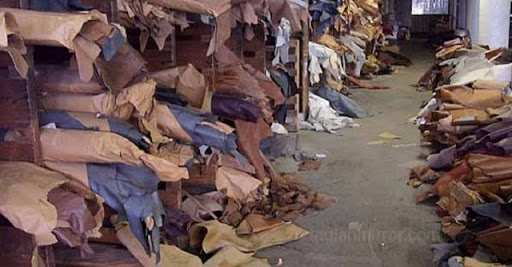We’ve capacity to supply uniformed forces — Leather sector
THE Zimbabwe Leather Development Council (ZLDC) says local leather companies have the capacity to supply the country’s uniformed forces with quality products and have pleaded with the Government for consideration on key leather supplies.
In line with the Zimbabwe Leather Sector Strategy 2021– 2030, which sets a value chain roadmap towards regaining the past glory of producing 20 million pairs of shoes annually, the ZLDC says harnessing domestic market needs is critical in achieving greater market competitiveness.
It noted that the country’s unformed forces (police, army, prison services), were a big domestic market whose supplies should bolster local content industrial focus.
ZLDC chairperson, Mr Clement Shoko, said over and above the need for enhanced access to affordable finance and competitive markets, they were lobbying the Government to source all leather products from local producers.
National Development Strategy 1 (NDS1)
“As a value chain, we wish to be afforded access to the Government’s uniformed forces leather footwear orders. It’s a low-hanging fruit for us and we have the capacity.
“We are a priority sector under National Development Strategy 1 (NDS1), and we wish our forex retention to be relaxed to enable our industry to be competitive in the export markets,” said Mr Shoko.
“We are looking for working space as in factory shells and land in urban and rural setups.”
Mr Shoko said under the Second Republic the leather sector was experiencing positive growth, which dovetails well into the country’s economic blue-print, which is anchored on accelerated employment creation and value addition.
He said supporting the sector was critical in fulfilling President Mnangagwa’s vision of transforming Zimbabwe into an upper-middle economy by 2030.
Guided by the NDS1, Zimbabwe is eager to increase the capacity utilization of value-added products from 30 to 75 percent by the end of 2030, enhancing application of sustainable production technologies from the current 10 to 60 percent of the manufacturing companies by 2030, and increasing exports of leather products from 10 to 40 percent of production by 2030. As such, Mr Shoko said ZLDC through its various nodes and partners is working on the creation of clusters like the progressive Bulawayo Leather Cluster.
“We have the interventions like Satellite Design Studio and Solidaridad projects all spearheading towards looking after the segment you identified,” he said.
Mr Shoko said the leather industry was on its way up and will soon be claiming its position as a key player in the manufacturing sector as programs focused in capacitating Small to Medium Enterprises (SMEs) through training, are being intensified.
President Mnangagwa
The SME train the trainer is a program supported under the Solidaridad Southern African Development Community (SADC) support to industrialisation and productive sectors (SIPS) leather value chain capacity building project.
The program was launched last year in June and is one of the key interventions towards facilitating the realisation of the SADC Regional Indicative Strategic Development Plan 2020-2030 (RISDP), which prioritises industrial development and market integration and places industrialisation at the centre of the regional integration agenda.ebusinessweekly











